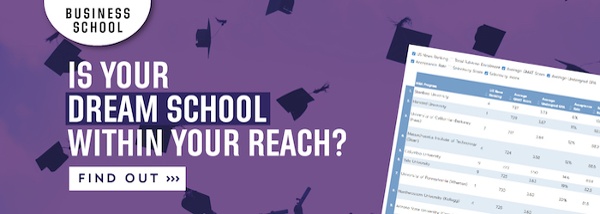
In an effort to streamline and simplify the letter of recommendation writing process, a few top business schools with the cooperation of GMAC have released the new Common Letter of Recommendation. This is an initiative, according to the GMAC website, to “help reduce the burden of asking for – and submitting – letters of recommendation.”
The Common LOR will provide a single set of questions for recommenders whose answers will be sent to participating schools. Recommenders win because they won’t be over-tasked with writing multiple letters for multiple schools for multiple students, and applicants win because they’ll be more comfortable requesting letters from their busy mentors, professors, or employers.
Participating schools (per the Ross admissions blog) include Michigan Ross, Cornell Johnson, NYU Stern, and Stanford GSB. Other schools are expected to join these in the coming year. Isser Gallogly, Assistant Dean of MBA Admissions at NYU Stern School of Business, clarified that this year NYU Stern is using the open-ended questions from the Common LOR, but not the form in its entirety.
You can view the Common Letter of Recommendation Template (PDF) here. It is available in English, Chinese, Korean, and German, and GMAC hopes to add additional languages in the future. For U.S. schools, recommendations are normally submitted in English. However, by making the form available in multiple languages, GMAC hopes to reduce the potential for misunderstandings by recommenders who are not native English speakers.
The form asks recommenders to rate applicants on 16 “competencies and character traits” that are important to leadership and management. The competencies are divided into four groups:
1. Achievement
• Initiative
• Results Orientation
• Communication
• Influence and Collaboration
• Professional Impression, Poise, and Presence
2. Influence
• Respect for Others
• Team Leadership
• Developing Others
• Change Leadership
3. Personal Qualities
• Trustworthiness/Integrity
• Adaptability/Resilience
• Self-awareness
4. Cognitive Abilities
• Information Seeking
• Analytical Thinking
• Problem Solving
• Strategic Orientation
In addition, recommenders are asked to respond to the following three questions:
1. Please provide a brief description of your interaction with the applicant and, if applicable, the applicant’s role in your organization. (50 words)
2. How does the performance of the applicant compare to that of other well-qualified individuals in similar roles? (E.g. what are the applicant’s principal strengths?) (500 words)
3. Describe the most important piece of constructive feedback you have given the applicant. Please detail the circumstances and the applicant’s response. (500 words)
My Thoughts
Accepted consultant Natalie Grinblatt Epstein, a former admissions director and GMAC volunteer, emailed me yesterday that she had tried for years when she was an admissions director to institute a common LOR system through GMAC. She hadn’t been successful.
Fast forward a decade or so. After the 2013 AIGAC survey revealed that almost 40% of MBA applicants were asked to draft their own letters of recommendation for their recommenders’ signature, schools realized there was a problem with the authenticity (and value) of the recommendations they were receiving. Some programs decided for the 2014 and 2015 application cycle to ask the same long-form questions of recommenders. Their intent was the same as that announced on GMAC’s Common LOR page: “reduce the burden of asking for – and submitting – letters of recommendation.”
This year’s move to a Common Letter of Recommendation form is long overdue in MBA admissions. I applaud the four pilot schools and GMAC for taking the initiative on this. The questions posed are excellent. Although the length of the form is a little intimidating, the ratings won’t take a lot of time. Drafting the two 500-word responses will take more time, but at least they can be used for multiple schools, and in the future if things go as they should, most or all schools.
The writing requested of recommenders is ironic because some programs with more restrictive word limits, will end up seeing more of the recommenders’ writing than the applicants’. But that’s the way it is when many programs prevent or at best strongly discourage applicants from submitting anything approaching 1000 words.
Moving away from that unintended consequence and looking at the hoped for result of the Common Letter of Recommendation: If the recommendations are less burdensome, students will have an easier time requesting the favor of providing the recommendations from their bosses and colleagues, and recommenders will be less likely to ask applicants to draft them.
The Common LOR will reduce the you-write-it-I’ll-sign-it syndrome, but it won’t eliminate it. 1000 words are still a lot to ask of time-pressed recommenders. Since the whole point of the recommendation is to get another party’s perspective on the applicant’s candidacy, you-write-it-I’ll-sign-it is a complete waste, and it’s understandable why schools don’t want it. The new common recommendation will make the system work more effectively and give the schools more of what they want while easing the burden on recommenders and applicants.
And who knows, maybe someday schools will want to hear as much from applicants as they do from recommenders.
Related Resources:
• MBA Letter of Recommendation Assistance
• How Not to Ask for a Letter of Recommendation
• UT McCombs Now Allows LinkedIn Recommendations



